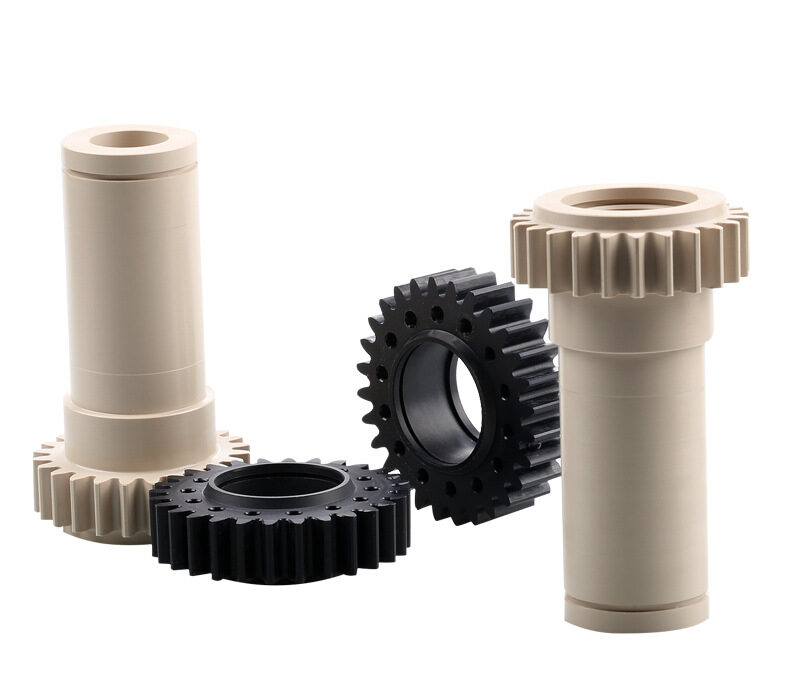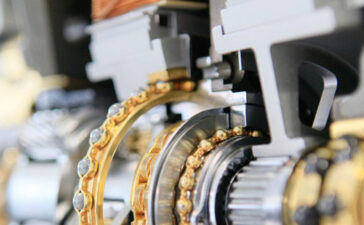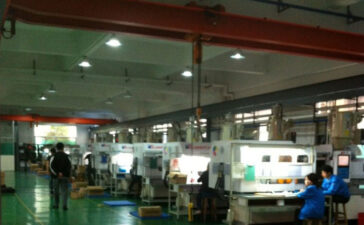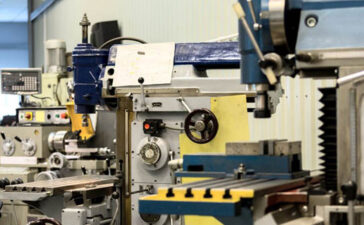High-precision and high-efficiency processing of precision mold processing become an inevitable trend
In recent years, the needs of users who use cutting tools have also changed. In the past, people generally believed that knives were consumables, so they wanted to reduce tool costs by reducing their usage. Recently, people’s views have changed, and it is believed that the tooling cost should be reduced by giving full play to the role of tools. This is exactly the point of view of the “processing halving movement” proposed by Hitachi Tool Co. 4 years ago. In order to cope with this change in users’ needs, it is necessary for tool manufacturers to concentrate on developing more efficient tools.
Solid carbide end mill “Epoch Deep Radius (Epoch Deep Radius)”
(1) Cutting performance
In recent years, the trend of replacing previous electrical discharge machining with cutting machining has become more and more obvious. This demand has gradually turned to cutting narrow and deep parts on the workpiece. When using an end mill to deep-cut such narrow and deep parts, the mainstream tool that is suitable is a small-diameter ball head end mill (Hitachi Tools is also producing Epoch deep-cut ball end mills and Epoch pen-type deep-cut ball heads) End mill series). However, when using a small-diameter ball-end end mill for efficient deep cutting, the following problems will occur (that is, the problem of replacing electrical discharge machining with cutting):
- ① the cutting resistance is easy to increase;
- ② the cutting speed at the center is difficult to increase (top The center blade part is easy to be damaged);
- ③ There is a theoretical cutting residual part (the radial cutting amount of the tool cannot be too large).
In order to solve the above problems, Hitachi Tools has developed a small-diameter long-necked series Epoch deep-cutting corner milling cutter. When using a small-diameter end mill for deep cutting, if the cutting resistance at the tip of the cutting edge of the tool is too large, it will generate vibration and cannot be processed under efficient cutting conditions, which affects the processing efficiency. From the perspective of cutting resistance, the comparison between the ball end mill and the R-angle end mill shows that the latter has a smaller cutting edge contact area and the cutting resistance is relatively small.
In addition, when contour cutting is performed, the ball end mill has theoretical cutting residues, and especially the end cutting edge with a low cutting speed is easily damaged. The rounded corner milling cutter can usually form a certain cutting surface during machining, so it has the advantages of stable and reliable machining. Epoch deep-cutting corner milling cutters developed now can prevent chattering during deep cutting. In order to further improve the processing efficiency, the inverted cone design is adopted. This design can prevent the peripheral edge from coming into contact with the material being cut due to tool bending during the cutting process, thereby achieving stable processing. In addition, the tool coating uses a TH (TiSiN) hard coating with high hardness, high heat resistance and wear resistance, which is very suitable for direct deep cutting of high hardness materials.
The following describes the characteristics of Epoch deep-cutting corner milling cutter through processing examples.
(2) Processing example
①Example of efficient groove processing
In order to process grooves efficiently, it is necessary to increase the step distance in the XY direction to a certain extent. However, if a ball end mill is used, the center edge that cannot increase the cutting speed will be subjected to a large load and will have to be reduced. Cutting conditions.
It can be seen from the results of using a ball end mill to process the groove: if the set XY step is increased, the degree of damage at the center edge will also increase; if the set XY step is reduced, the cutting will be reduced In terms of conditions, although no damage to the center edge was observed, the wear of the front center edge edge was increased. From the results of processing grooves with Epoch deep-cutting corner milling cutters, it is known that not only the cutting is stable, but also the wear is reduced, and the groove processing effect is good for high hardness (about 50HRC) hot die forged steel workpieces.
In this processing example, compared with the ball-end end mill, the processing time required for the new rounded end mill is reduced by about 1/4, and the processing cost is reduced by more than half.
②Deep cutting of high hardness materials
It can be seen from the results of machining SKD11 cold work die steel (60HRC) with a long-neck end mill that the outer cutting edge of the ball end mill has a lot of damage; while the Epoch deep-processing round corner end mill has no damage, only uniform abrasion. It can be inferred that because the contact length of the cutting edge of the ball end mill is large, the cutting resistance is also large, and the outer peripheral cutting edge with a high cutting speed is easily damaged. This point is the same as in Example ①, and the corner milling cutter has obvious advantages.
It can be seen from the comparison between the round corner end mills of Hitachi tools and the round corner end mills of other companies under the same processing conditions. The round corner end mills produced by other companies do not adopt the inverted cone design, which is higher than 60HRC. The processing effect of hardness materials is not ideal. Hitachi Tool’s new generation of deep-cut rounded corner milling cutters use a unique design with an anti-oblique shape, and the peripheral cutting edge is point-contact cutting. Even when machining a high-hardness material by straight cutting, the cutting resistance is small. And the processing status is stable.
It can be seen from the processing examples of Epoch deep-cutting corner milling cutters that the performance of this tool is excellent, and it has obvious advantages especially for deep cutting of high-hardness materials. In short, give full play to the role of the rounded corner milling cutter, which can directly perform groove processing on the heat-treated quenched material. Because the processing process is shortened, the processing cost can be greatly reduced. The experiment proves that the processing efficiency can be increased by more than 5 times by using the corner milling cutter, and the processing cost can be reduced by 35%.
Indexable corner milling cutter for roughing of large feed
(1) Multi-edged large feed rounded end mill
The mold industry generally adopts cutting methods with small depth of cut and large feed to achieve efficient processing, but market demand requires further improvement of processing efficiency. In response to this need, Hitachi Tools has developed multi-cutting edge tools and coatings that can withstand high cutting speeds even under high feed conditions. The design concept of the multi-edge type high-feed rounded tool is to reduce the size of the cutting edge according to the previous design method of the number of edges within a limited tool outer diameter, but it will not reduce the edge strength. Set the radius of the main cutting edge of the insert of the high-feed rounded end mill to R8. Compared with a circular blade with the same radius as R8, it has the same cutting edge strength, but also minimizes the blade area, thereby achieving multi-edge. In the past, the inserts with an outer diameter of φ32 all had two cutting edges, while the multi-edged high-feed rounded end mills had as many as five cutting edges, a 2.5-fold increase over previous products.
(2) Features of large feed tool
In the past, indexable cutters used for roughing were generally equipped with round blades. On the surface, it seems that a large depth of cut can be obtained, and a large amount of material can be cut at once, but because the contact length of the cutting edge and the processed material is longer than the straight edge The contact length of the blade increases the cutting resistance, making it difficult to achieve high feed cutting. In addition, the circular blade is subjected to radial force in the processing occasions where the tool overhang is long, which is easy to cause the tool to bend and vibrate. The cutting edge of the multi-edge type high-feed rounded end mill is designed at the bottom of the tool’s rotary axis, so the cutting resistance mainly acts on the axial direction, that is, the multi-edge type high-feed rounded end mill is not easy even if the overhang is long Chattering occurs, enabling stable processing. At the same time, by miniaturizing the blade, the length of the cutting edge is significantly shorter than that of the previous large-feed tool, reducing the cutting resistance, thereby effectively controlling the cutting force by multi-edge.
(3) Advantages of small cutting depth and large feed processing
Small cutting depth and large feed machining are the application conditions of large feed cutters. Its advantages are large material removal rate and high processing efficiency. Compared with the high-efficiency machining with a large depth of cut, when the depth of cut is reduced, high-efficiency rapid feed processing can be performed within the maximum feed limit of the machine table.
When the round blade is used to increase the processing efficiency by increasing the cutting depth, there will be obvious cutting residue on the workpiece after processing, which will increase the processing load of the subsequent finishing tool. Although the roughing efficiency is very high, it will reduce the processing efficiency of subsequent processes. Compared with this, when using a small depth of cut and a large feed, the residual cutting part of roughing is reduced, and it is closer to the shape of the final finishing, which can reduce the load of the finishing tool in the subsequent process, making roughing and finishing At the same time, the efficiency is improved, and high-efficiency processing is realized stably and reliably.
Super-lubricated JX coating
As described above, while improving the cutting efficiency by increasing the shape of the cutting edge and increasing the number of cutting edges, if the rotation speed of the tool can be increased, the cutting speed and the feed speed can be increased, the processing efficiency can be further improved. However, at higher than the current cutting speed, the current tool coating is insufficient to withstand the high temperature and pressure generated by cutting. Therefore, we have re-recognized the impact of small depth of cut and large feed cutting on the cutting edge, and determined the performance necessary for high speed: even at high temperatures, it has lubrication that can suppress the friction between the chips generated by large feed cutting and the tool performance. To this end, Hitachi Tools successfully developed a titanium compound series coating with extremely high lubricity. This new performance JX coating, which can be used for high-efficiency processing, can effectively reduce the crescent crater wear and flank face wear, and effectively prevent the edge sticking phenomenon.
(1) JX coating with low friction coefficient, high hardness and high toughness
The JX coating adds self-lubricating materials to the titanium and aluminum compounds, which can use the cutting heat to form a thin oxide layer on the surface of the coating. The oxide layer can improve the lubricating performance, control the cutting temperature rise, and at the same time reduce the affinity between the cutting edge and the workpiece to be processed, and inhibit the cutting edge from sticking. The hardness of the JX coating is equivalent to the TiSiN coating with the highest hardness. The high hardness can prevent the cutting edge from abrasion under high-speed and high-efficiency machining environment and greatly extend the service life of the tool. The ceramic hard coating is difficult to effectively prevent the thermal cracks caused by the intermittent cutting that is unique to milling, but the JX coating has a high toughness and therefore has a high resistance to chipping. It can be seen that JX coating is a new generation of coating with lubricity, abrasion resistance and chipping resistance. Under the premise that the number of blades and the service life are the same, it increases the cutting speed of the previous coating by 40%.
(2) High-speed cutting example of multi-blade, large-feed corner milling cutter
Example of high-efficiency machining on the latest CNC machining center machine (cutting feed speed up to 50m / min) using a multi-edged high-feed rounded corner milling cutter and JX coated insert: multi-edged large-feed The outer diameter of the radius of the corner milling cutter is φ32mm, with 5 cutting edges; the blade brand is JX1045; the material to be processed is 40CrMnMo7 (equivalent to SKT3 of JIS standard). Cutting at cutting speed Vc = 300mm / min, spindle speed n = 3000 / min, cutting feed speed Vf = 50m / min, feed per tooth fz = 3.3mm / tooth, cutting depth ɑp × ɑe = 0.3 × 25mm Under the conditions, cutting can be completed quickly. The high-speed CNC machining center used for processing has not been widely used at home and abroad. Compared with the currently used high-speed CNC machining center with a cutting feed speed of 10-20m / min, the processing efficiency can be increased by 2.5-5 times. The new generation of multi-edged high-feed rounded corner milling cutters can maximize the functions of existing high-speed CNC machine tools.








